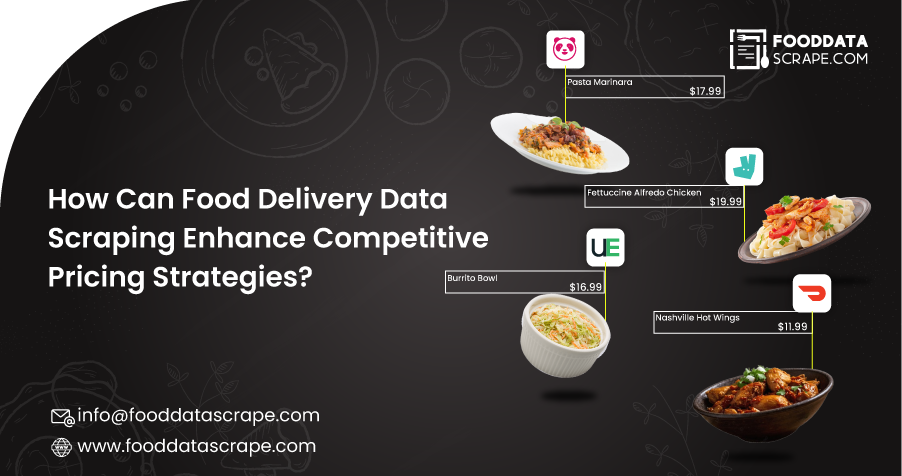Introduction
A surging business in the food delivery sector has stemmed from changed consumption patterns, technological advances, and growing internet use. Though the most prominent players in the industry are Uber Eats, DoorDash, Deliveroo, and Foodpanda, they have to withstand a highly competitive market where price is the key factor that draws potential customers and retains customers. Using Food Delivery Data Scraping for Competitive Pricing Strategies allows businesses to collect data from competitors, gauge their pricing models, and enhance customer experience. Analyzing Competitor Pricing in the Food Delivery Sector helps companies track trends, alter their offerings, and stay ahead. The Importance of Pricing Analysis in the Food Delivery Industry is that it drives profitability and customer loyalty. With pricing strategies, businesses can improve market positioning and maximize revenue. Data-driven decision-making through web scraping has become crucial for optimizing pricing, ensuring businesses stay ahead in the dynamic food delivery landscape.
The Role of Data Scraping in Competitive Pricing Analysis
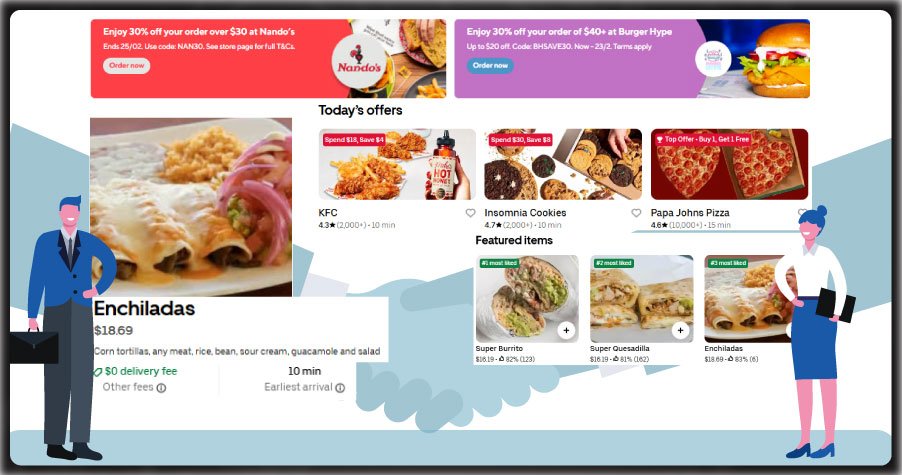
Food Delivery Data Scraping is a strong technique through which companies can gather a considerable quantity of structured data from online platforms. The food delivery business needs to keep itself updated about all the competitive services around it, including the prices of its menus, delivery charges, discounts, and restaurant availability. All this will be obtained using competitors' portals. Thus, using Competitive Pricing Strategies for Food Delivery Services, companies will refine the price competitiveness to be both consumer-attractive and profitable.
An effective competitive pricing strategy will require a firm understanding of the market trends, consumer behavior, and competitor tactics. Food Delivery Data Scraping can help businesses trace:
- Competitor pricing trends across multiple locations.
- Seasonal variations in food prices affect demand and profitability.
- Discount strategies and promotional offers that drive customer engagement.
- Delivery fees and service charges, enabling competitive adjustments.
- Restaurant partnerships and exclusivity agreements impacting market share.
Additionally,Restaurant Menu Data Scraping is crucial in analyzing item-specific pricing, understanding customer preferences, and optimizing menu offerings. By leveraging these insights, businesses can create dynamic pricing models that are competitive, flexible, and customer-centric, ensuring long-term success in the food delivery sector.
Leverage Food Delivery Data Scraping to Gain Insights for Smarter Decision-Making.
Importance of Food Delivery Data Scraping for Competitive Pricing
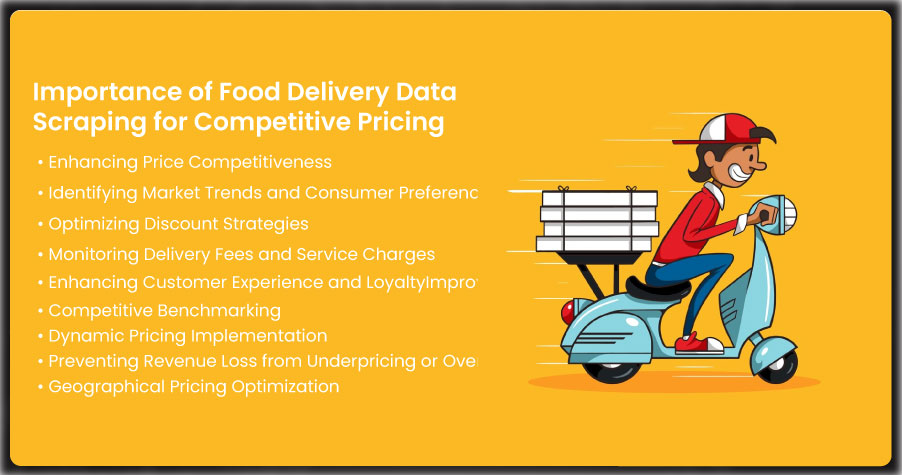
In the fast-growing food delivery industry, pricing strategies are critical for attracting customers while maintaining profitability. Leveraging Food Data Scraping API Services allows businesses to extract and analyze real-time competitor pricing, discounts, and consumer behavior trends. Below are key ways food delivery companies can optimize their pricing strategies using data scraping:
- Enhancing Price Competitiveness: Consumers compare prices across multiple platforms before placing an order. By continuously analyzing Food Delivery Datasets, companies can dynamically adjust their prices to stay competitive without sacrificing profitability. Real-time price monitoring ensures they can match or undercut competitors while sustaining margins.
- Identifying Market Trends and Consumer Preferences: Understanding consumer behavior is crucial for success. With Food Delivery Intelligence Services , companies can track purchasing patterns, preferred cuisines, peak ordering times, and delivery preferences. Insights from data scraping allow businesses to adjust pricing structures and promotions to align with real-time demand.
- Optimizing Discount Strategies: Discounts and promotions help attract and retain customers, but excessive price cuts can harm profitability. Businesses can fine-tune promotional campaigns by analyzing competitor data, ensuring they remain attractive without overspending. A Food Price Dashboard enables real-time tracking of competitor discounts, allowing businesses to make data-driven decisions.
- Monitoring Delivery Fees and Service Charges: Delivery fees significantly impact customer decisions. Some platforms offer free delivery under specific conditions, while others adjust fees based on distance, order value, and peak hours. Data scraping helps businesses analyze market trends and implement optimal pricing structures that balance affordability with operational costs.
- Improving Restaurant and Vendor Partnerships: Food delivery platforms rely on strong partnerships with restaurants and vendors. Restaurant Data Intelligence Services help businesses identify trending restaurants, popular cuisines, and high-demand food items. This insight allows companies to strengthen vendor relationships and negotiate commissions effectively.
- Enhancing Customer Experience and Loyalty: Transparent pricing fosters customer trust and loyalty. If customers perceive a platform as consistently more expensive than competitors, they may switch services. By leveraging real-time pricing analysis, businesses can ensure fair pricing and maintain a loyal customer base.
- Competitive Benchmarking: Understanding how pricing compares to competitors is crucial for strategic planning. Data scraping enables businesses to conduct competitive benchmarking, allowing them to measure their strategies against market leaders and make necessary adjustments to maintain a strong market position.
- Dynamic Pricing Implementation: Many food delivery services adopt dynamic pricing models, where prices fluctuate based on demand, competitor pricing, and availability. By leveraging Food Data Scraping API Services , businesses can implement dynamic pricing strategies, adjusting prices during peak hours, bad weather, or high-demand periods.
- Preventing Revenue Loss from Underpricing or Overpricing: Without data-driven pricing analysis, businesses risk setting prices too high or too low. Overpricing may drive customers away, while underpricing reduces profitability. A Food Price Dashboard helps businesses strike the right balance, ensuring competitive and sustainable prices.
- Geographical Pricing Optimization: Different regions have varying economic conditions, food preferences, and purchasing power. A pricing strategy that works in a metropolitan area may not be effective in smaller towns. Food Delivery Datasets allow businesses to analyze regional pricing trends and customize pricing strategies for different markets.
By leveraging data scraping, food delivery businesses can optimize pricing strategies, improve customer retention, and enhance profitability in an increasingly competitive market.
Ethical and Legal Considerations
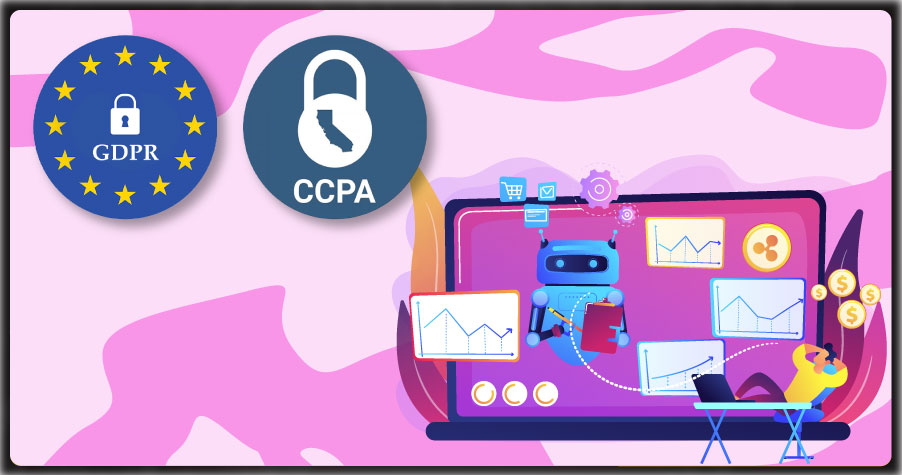
While data scraping offers valuable insights, it must be conducted responsibly and ethically. Some platforms explicitly prohibit scraping in their terms of service and violating these rules can lead to legal consequences. Food delivery companies should:
- Use publicly available data sources.
- Ensure compliance with data protection regulations such as GDPR and CCPA.
- Implement API-based data collection when available.
- Avoid aggressive scraping that could disrupt competitors' platforms.
- Respect user privacy and avoid collecting personally identifiable information.
Following ethical scraping practices, food delivery companies can leverage competitive pricing analysis without legal risks.
How Does Food Data Scrape Help in Collecting Food Delivery Data?
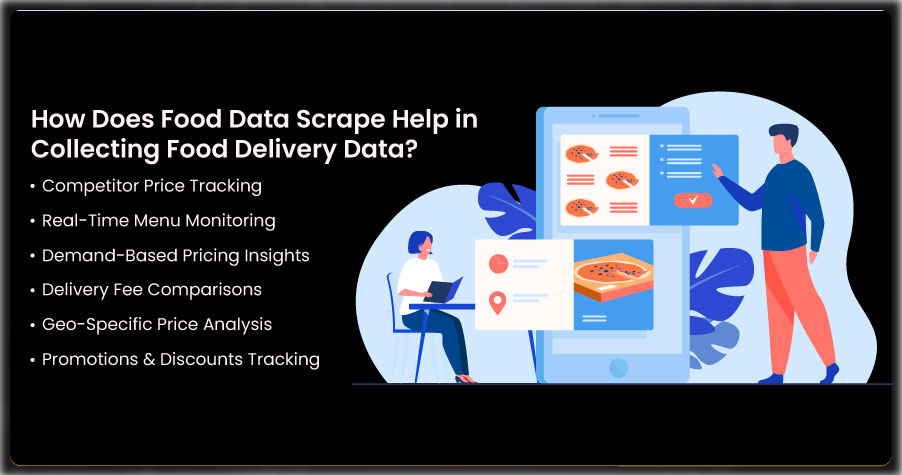
Food Data Scrape helps businesses collect real-time food delivery data, analyze competitor pricing, and optimize pricing strategies for market competitiveness.
- Competitor Price Tracking – Extracts pricing data from multiple food delivery platforms to compare rates and adjust pricing strategies accordingly.
- Real-Time Menu Monitoring – Captures menu updates, item availability, and price changes to ensure businesses stay informed about market trends.
- Demand-Based Pricing Insights – Analyzes peak hours, seasonal trends, and customer preferences to optimize pricing models for maximum profitability.
- Delivery Fee Comparisons – Scrapes data on delivery charges across different platforms to help businesses offer competitive pricing and attract more customers.
- Geo-Specific Price Analysis – Collects location-based pricing data to customize pricing strategies for different regions and maximize local market potential.
- Promotions & Discounts Tracking – Monitors competitor deals, discounts, and promotional offers to help businesses create competitive pricing strategies that drive customer engagement.
Conclusion
In today's highly competitive food delivery market, pricing strategy is a key determinant of success. Food delivery data scraping provides companies real-time, data-driven insights into competitor pricing, market trends, and consumer behavior. By leveraging this information, businesses can fine-tune their pricing models, optimize discounts, enhance customer experience, and drive profitability.
With the right tools and ethical considerations, food delivery data scraping can be a game-changer for companies seeking to stay ahead of the competition. A robust competitive pricing analysis strategy ensures sustained growth and market leadership in an industry where price sensitivity influences customer choices.
If you are seeking for a reliable data scraping services, Food Data Scrape is at your service. We hold prominence in Food Data Aggregator and Mobile Restaurant App Scraping with impeccable data analysis for strategic decision-making. Holding a strong legacy of excellence as our backbone, we deliver reliable and data-driven results. Rely on us for your scraping needs.

















































































